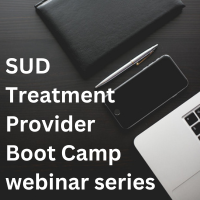The Stark Law May Not be so Stark
October 29, 2019

It’s looking more and more like the fee-for-service model may be a thing of the past. In an effort to move forward with value-based care, the United States Department of Health and Human Services or HHS has proposed changes to two laws that have prevented physicians and other providers from referring patients if the referral benefited the provider financially.
Stark Compliance and Anti-Kickback Regulations
The Stark Law was designed to prevent physician self-referral, or the practice of referring clients to a medical facility in which they have a vested interest, be that ownership, investment, or a structured compensation arrangement. This was to prevent the physician from committing Medicaid or Medicare fraud by referring patients for tests and/or procedures that they may not need.
Similarly, the Anti-Kickback Statute prevents physicians from knowingly and willingly receiving any bribes or any other forms of profit for generating Medicare, Medicaid or other federal health care program business.
There are several key differences:
- The Stark Law only applies to Medicare and Medicaid whereas the Anti-Kickback Statute applies to any form of government healthcare including Tri-care and Department of Labor program
- The Stark Law only applies to physician referrals, whereas the Anti-Kickback Statute applies to anyone referring patients illegally.
- The Stark Law only applies to a specific list of “Designated Health Services” while the Anti-Kickback Statute applies to all services or items paid for by a government healthcare program.
- Violations of the Stark Law are limited to civil penalties, whereas violating the Anti-Kickback Statute is a federal crime punishable by up to five years in prison and a $25,000 dollar fine for each violation.
While there have been some exemptions in the past, such as if the referral is for a physician within the same practice, there have not been enough exemptions to truly promote a value-based care chain based on the continuum of care for the patient.
What You Need to Know – Proposed Changes
Recognizing the need for reform, to make it possible for value-based care to be able to really work for the American people, the HHS made these proposed changes to modernize and clarify the Stark Law and the Anti-Kickback Statute on October 9, 2019.
These proposals will ease the compliance burden for healthcare providers across the industry, while still safeguarding patients and programs from fraud and abuse. In the past, the Stark Laws and the Anti-Kickback Statute have impeded providers that were working to better coordinate care for patients.
The Centers for Medicare & Medicaid Services (CMS), recognized that incentives are very different when a healthcare system is working toward value and not the volume of services provided. According to the CMS administrator Seema Verma,
“We serve patients poorly when government regulations gather dust in the attic: they become ever more stale and liable to wreak havoc throughout the healthcare system. Administrative costs are driving up the cost of healthcare in America – to the tune of hundreds of billions of dollars. The Stark proposed rule is an important next step in President Trump’s healthcare agenda for Americans. We are updating our antiquated regulations to decrease burden for providers and helping bring down these increasingly escalating costs.”
If finalized, these proposed changes would offer value-care based exemptions allowing physicians and other health care providers to create and access value-based arrangements without fear of reprisal for breaking laws. The exceptions will be applied across the board regardless of payer type.
According to the HHS, these exemptions would allow such practices as:
- Sharing data analytics between specialized practices and primary care practices to better coordinate and manage the care of shared patients.
- Hospitals and physicians could work together in new ways, allowing them to coordinate care for patients being discharged from the hospital. This could include sharing data analytics, systems, remote monitoring technology, improving health outcomes and preventing unnecessary emergency room visits and/or readmissions.
- Use free, smart pillboxes and home health aides to help patients stick to their medication regimen.
- Local hospitals could partner with nearby providers to improve cybersecurity through donations of free cybersecurity software to each physician that refers patients to said hospital.
This move could really open up the healthcare system for real lasting change that provides value and reduces cost, for both the patient and the provider. However, it isn’t all roses. There are several things that need to be considered.
The Devil’s in the Details – Compliance with Proposed Changes
While the proposed changes have the potential to really open doors for value-based care, documentation is going to be the challenge for the providers that are applying for these exemptions.
In the past, HHS officials and their attorneys would review one agreement and either approve or deny it. The new rules would require HHS to review any and all dealings a provider has with others across the entire continuum of care. Each agreement will be different so there is a much larger pool of documents and agreements that will have to be reviewed and to make sure they are compliant. It will be very important to document everything.
In addition to the contractual agreements to work together between providers and other entities, providers will need to document the value that they are providing. One of the criteria for obtaining these exemptions is being able to document how the working relationships will benefit the patient. So there would not only be documentation of the particular issue but also of the arrangements for any sort of referral or continued care.
All of the additional documentation will also require greater analytics, but you have to be careful of what data you are gathering. It needs to be meaningful data that actually serves to provide proof that the care has value.
HHS has already acknowledged that the use of analytics is important in determining value, so in the future, we are likely to see the federal department looking very closely at the data that is provided. It may be wise to even start the development of a government relations department.
These are only proposed changes and we are likely to see more modifications as it is finalized and implemented. It would be smart to have a department that understands the regulations and the requirements and that will keep up with any changes as different aspects are litigated and confirmed.
Who Will or Won’t Benefit from these Changes?
Many providers are still stuck in the days of the fee-for-service model and have been dragging their feet about moving to the value-based care model. In fact, according to the Health Care Payment Learning & Action Network only 34% of providers have developed a value-based care approach.
In short, HHS is making the push for value-based care. If providers and the like are not willing to make the necessary changes, they may be left out in the cold. With the new changes, however, we could see more physicians and hospitals willing to make the leap, now that it will be easier than ever to form partnerships and value-based arrangements.
If these providers insist on keeping the traditional fee-for-service model, they won’t be able to provide the necessary proof that they add value to a patient’s care, and fewer people will be likely to partner with them.
The providers, hospitals, vendors, and other healthcare stakeholders that are providing value are the ones that are going to be benefitting from the changes. However, just because you are considered to be providing value, don’t expect that to be the end of it. You will also have to be able to defend your value-based care arrangements.
What’s Next?
As of October 9, 2019, there will be a 75-day window which will end December 31, 2019. During that time. the rules will be open for comment.
This gives providers and agencies time to look closely at both rules and a chance to submit comments during this timeframe. There need to be policies in place to support the successful transition to value-based payments, such as revisions to the Stark Law. The annual Legislative Conference will be taking place Nov. 3-5, 2019, in Washington, DC.

A national membership association that provides education and advocacy for those in the behavioral health and addiction treatment industries.
We are the leading and unifying voice of addiction-focused treatment programs.



